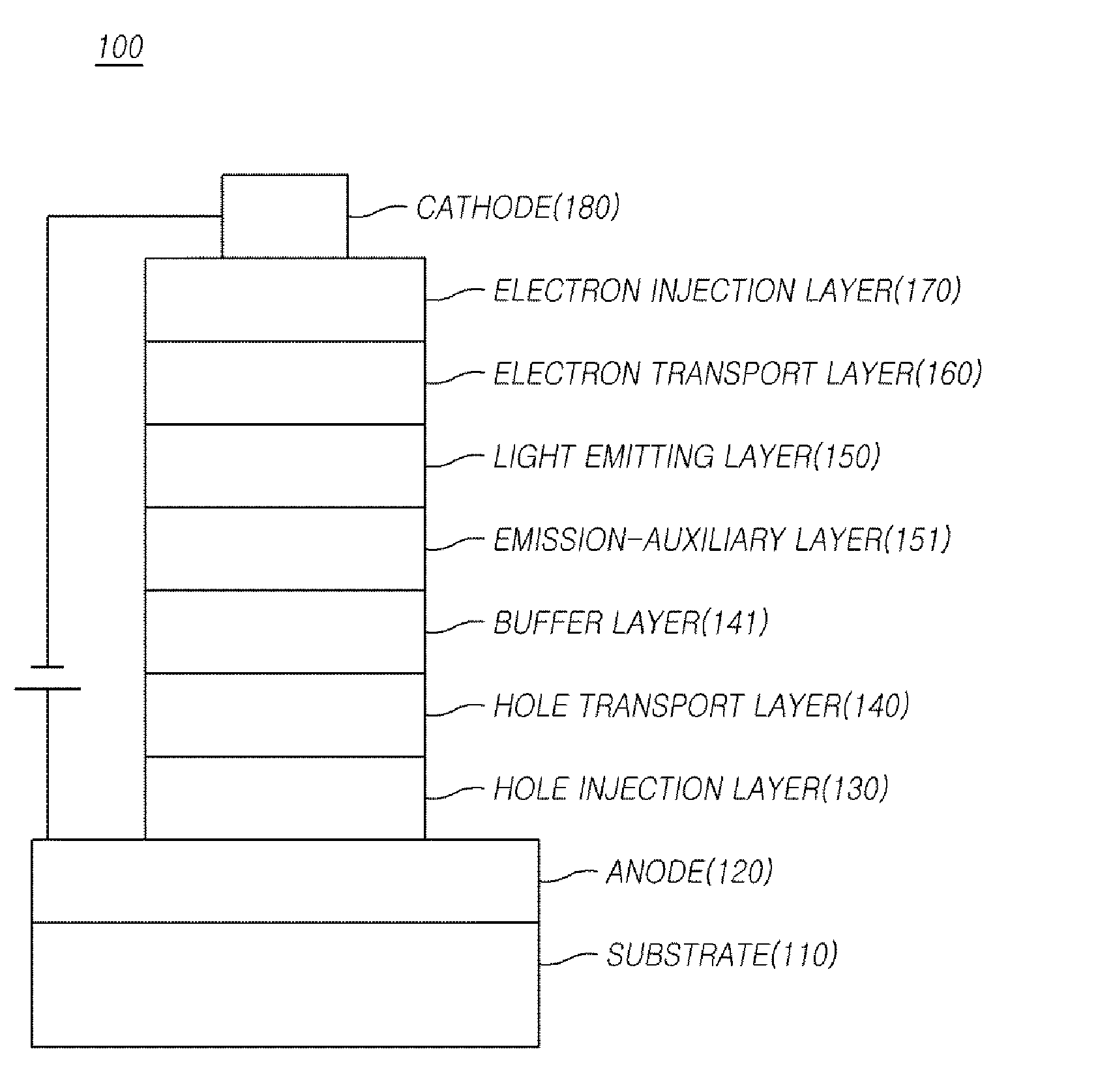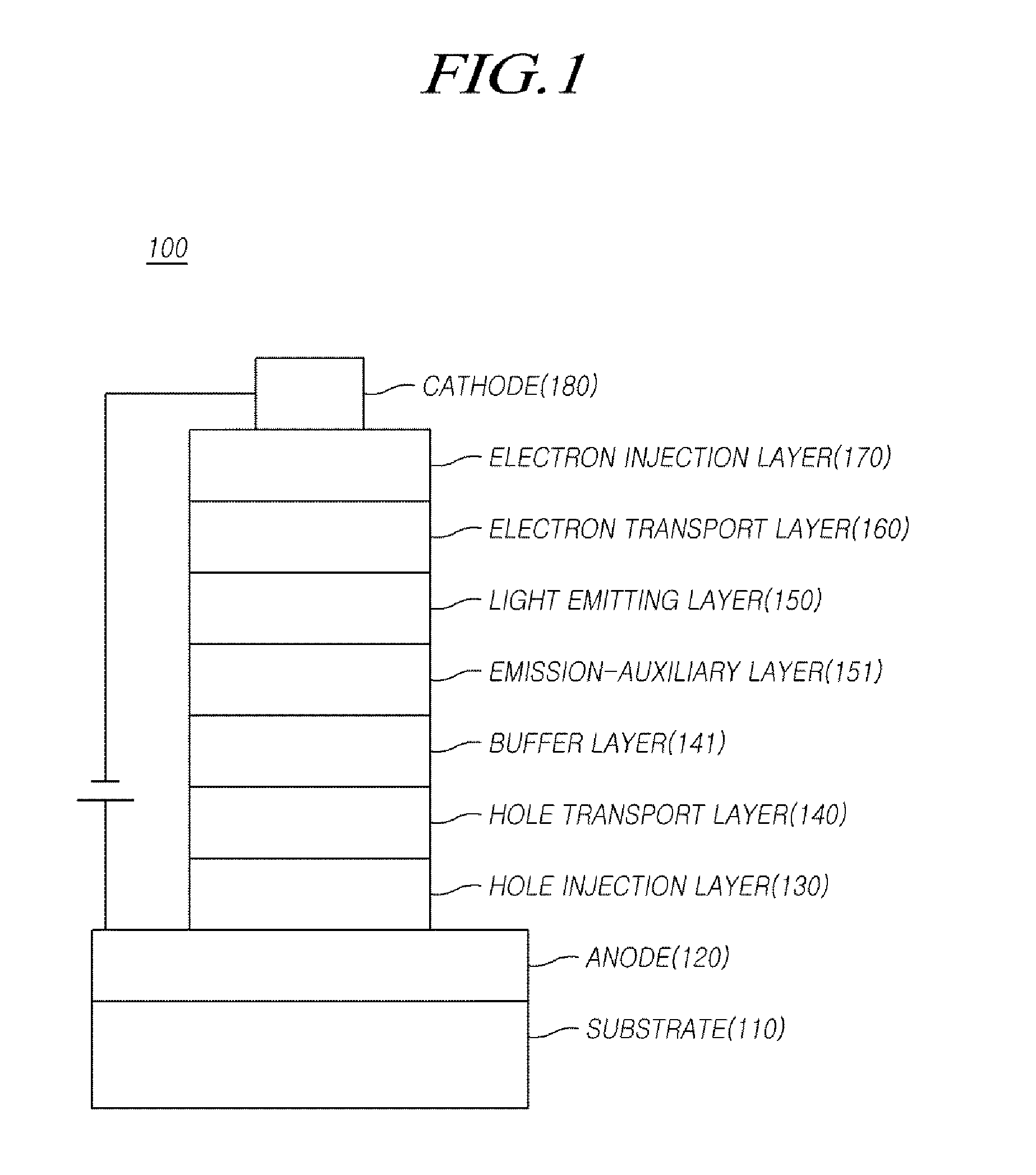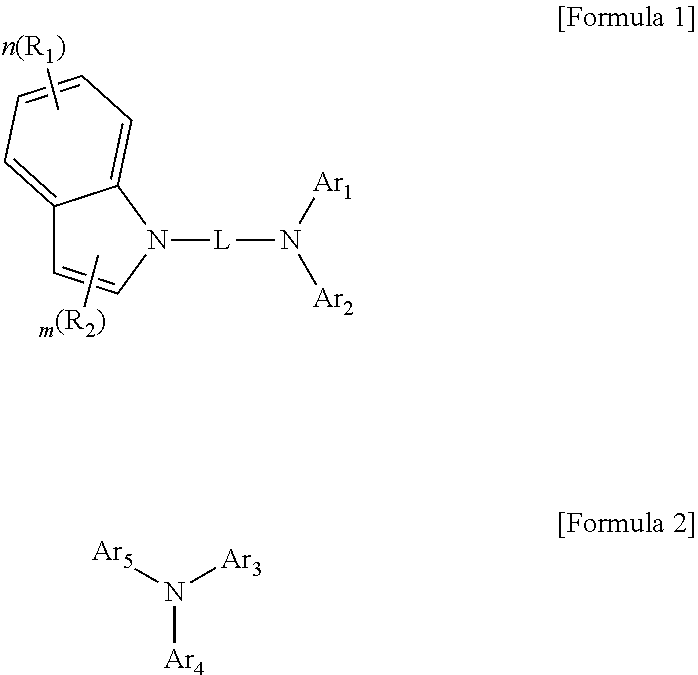Compound, organic electric element using the same, and an electronic device thereof
- Summary
- Abstract
- Description
- Claims
- Application Information
AI Technical Summary
Benefits of technology
Problems solved by technology
Method used
Image
Examples
synthesis example 1
Synthesis of Formula 1
[0075]The inventive compound (final products; product 1-1 to product 1-150) is prepared by reacting Sub 1 with Sub 2, as represented in Reaction Scheme 1 below.
example 1
Synthesis of Sub 1
[0076]Sub 1 in Reaction Scheme 1 above may be synthesized by the reaction pathway represented by Reaction Scheme 2 below.
[0077]Examples of synthesizing specific compounds belonging to Sub 1 are as follows.
[0078](1) Synthesis Method of Sub 1-1
[0079]1H-indole (57.12 g, 487.6 mmol) as the starting material was dissolved in nitrobenzene in a round bottom flask, and Sub 1-I-1 (245.06 g, 682.6 mmol), Na2SO4 (69.24 g, 487.6 mmol), K2CO3 (67.29 g, 487.6 mmol), and Cu (9.3 g, 146.3 mmol) were added to the reaction solution, followed by stirring at 200° C. Upon completion of the reaction, nitrobenzene was removed by distillation, and the reaction product was extracted with CH2Cl2 and water. The extracted organic layer was dried with MgSO4 and concentrated, and then the produced organic material was separated by a silica gel column and recrystallized to obtain 120.56 g of product (yield: 71%).
[0080](2) Synthesis Method of Sub 1-3
[0081]Using 5-phenyl-1H-indole (50.82 g, 263 mm...
example 2
Synthesis of Sub 2
[0106]Sub 2 in Reaction Scheme 2 above may be synthesized by the reaction pathway represented by Reaction Scheme 16 below.
[0107]Examples of synthesizing specific compounds belonging to Sub 2 are as follows.
[0108](1) Synthesis Method of Sub 2-11
[0109]Bromobenzene (24.13 g, 154.3 mmol) as the starting material was dissolved in toluene in a round bottom flask, and naphthalen-2-amine (44.18 g, 308.6 mmol), Pd2(dba)3 (4.24 g, 4.63 mmol), 50% P(t-Bu)3 (4.5 ml, 9.26 mmol), and NaOt-Bu (44.49 g, 462.9 mmol) were added to the reaction solution, followed by stirring at 40° C. Upon completion of the reaction, the reaction product was extracted with CH2Cl2 and water, the extracted organic layer was dried with MgSO4 and concentrated, and then the produced organic material was separated by a silica gel column and recrystallized to obtain 27.69 g of product (yield: 82%).
[0110](2) Synthesis Method of Sub 2-18
[0111]Using 4-bromo-1,1′-biphenyl (51.46 g, 220.7 mmol) obtained in the a...
PUM
 Login to View More
Login to View More Abstract
Description
Claims
Application Information
 Login to View More
Login to View More - R&D
- Intellectual Property
- Life Sciences
- Materials
- Tech Scout
- Unparalleled Data Quality
- Higher Quality Content
- 60% Fewer Hallucinations
Browse by: Latest US Patents, China's latest patents, Technical Efficacy Thesaurus, Application Domain, Technology Topic, Popular Technical Reports.
© 2025 PatSnap. All rights reserved.Legal|Privacy policy|Modern Slavery Act Transparency Statement|Sitemap|About US| Contact US: help@patsnap.com



